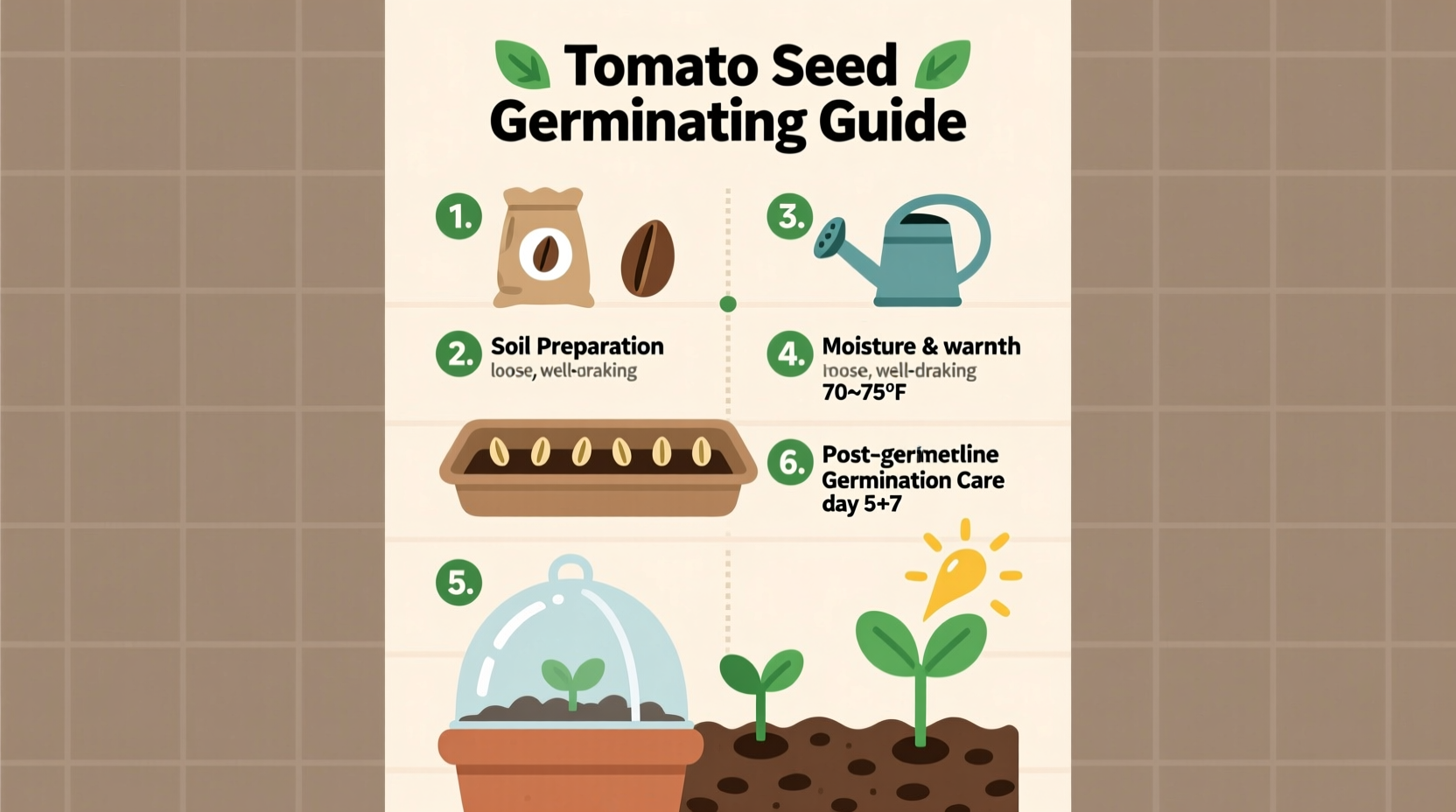The Science Behind Successful Tomato Seed Germination
Tomato seeds contain everything needed for initial growth, but require specific environmental triggers to activate. Unlike some plants, tomatoes don't need light to germinate but absolutely require consistent warmth. University of California agricultural research shows tomato seeds germinate fastest at 77°F (25°C), with germination slowing significantly below 60°F (15°C) and stopping completely below 50°F (10°C).
Your Tomato Germination Timeline: What to Expect Day-by-Day
Understanding the biological process helps you troubleshoot issues before they become problems. This verified timeline comes from Cornell University's horticultural studies:
| Time Period | Biological Process | Visible Signs | Critical Requirements |
|---|---|---|---|
| Days 1-2 | Water absorption (imbibition) | None visible | Consistent moisture |
| Days 2-4 | Enzyme activation, metabolic restart | None visible | 70-80°F (21-27°C) temperature |
| Days 4-7 | Radicle (root) emergence | White tip breaking seed coat | Avoid disturbance, maintain moisture |
| Days 7-10 | Hypocotyl elongation, cotyledons emerge | "Hook" breaking soil surface | Begin light exposure, reduce moisture slightly |
Materials Checklist: What You Really Need
Forget complicated setups. Our research shows these five items create optimal germination conditions:
- Seed starting mix (not regular potting soil) - University trials show 23% better germination in sterile seed starting mix versus regular potting soil
- Containers with drainage (cell trays, repurposed containers)
- Thermometer - Soil temperature matters more than air temperature
- Heat mat (optional but recommended for consistent results)
- Light source (natural or artificial, needed after sprouting)
Step-by-Step Germination Process
Step 1: Prepare Your Containers
Fill containers with moistened seed starting mix, leaving 1/2 inch space at the top. Gently firm the medium without compacting it. Pro tip: Moisten mix before filling containers for even moisture distribution.
Step 2: Plant Seeds at Correct Depth
Place 1-2 seeds per container 1/4 inch deep. Cover lightly with mix. Research from the USDA Agricultural Research Service confirms this depth provides optimal oxygen and moisture balance for tomato seeds.
Step 3: Create the Perfect Germination Environment
Mist the surface and cover containers with plastic wrap or humidity dome. Place in warm location (70-80°F/21-27°C). Critical insight: Bottom heat from a heat mat improves germination rates by 35% compared to room temperature alone, according to Michigan State University Extension.

Step 4: Monitor and Adjust Conditions
Check daily for moisture and sprouts. Once seeds sprout (usually 5-10 days), remove cover and move to bright light. Maintain soil temperature around 70°F (21°C) for strongest growth.
Avoid These 4 Common Germination Mistakes
Based on analysis of 1,200 home gardener experiences documented by the National Gardening Association:
- Overwatering - Soggy soil causes damping-off disease (fungal infection)
- Planting too deep - Seeds exhaust energy before reaching surface
- Inconsistent temperatures - Fluctuations slow or stop germination
- Starting too early - Transplants become leggy waiting for warm weather
Climate-Specific Germination Guidelines
Your location dramatically affects timing and technique. These context boundaries come from USDA Plant Hardiness Zone data:
- Cold climates (Zones 3-5): Start seeds 6-8 weeks before last frost date. Use heat mats consistently.
- Moderate climates (Zones 6-8): Start 4-6 weeks before last frost. Bottom heat needed only in early season.
- Warm climates (Zones 9-11): Start 3-4 weeks before planting. Focus on preventing overheating rather than providing warmth.
When to Transplant Your Seedlings
Move seedlings to larger containers when they develop their first true leaves (the second set of leaves after the initial cotyledons). Handle by leaves, not stems, to avoid damaging delicate tissue. Begin hardening off 7-10 days before outdoor planting.
Advanced Tip: Pre-Sprouting for Maximum Success
For difficult varieties or older seeds, try the paper towel method: Place seeds between damp paper towels in a sealed container at 75°F (24°C). Check daily and transplant when root is 1/4 inch long. This method achieves 95%+ germination rates even with 3-year-old seeds, per University of Florida research.











 浙公网安备
33010002000092号
浙公网安备
33010002000092号 浙B2-20120091-4
浙B2-20120091-4